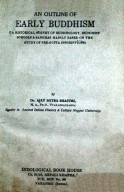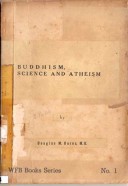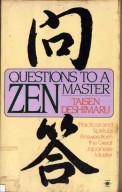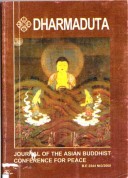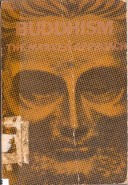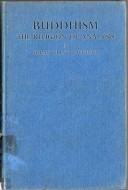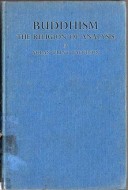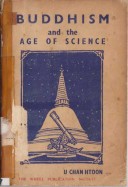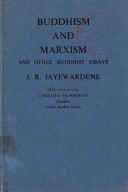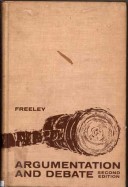Tìm Sách
Sách tiếng Anh-English >> Early Buddhism
Thông tin tra cứu
- Tên sách : Early Buddhism
- Tác giả : Ajay Mitra Shastri
- Dịch giả :
- Ngôn ngữ : Anh
- Số trang : 164
- Nhà xuất bản : Indological Book House-Varanasi India
- Năm xuất bản :
- Phân loại : Sách tiếng Anh-English
- MCB : 1210000002745
- OPAC :
- Tóm tắt :
A historical survey of bugghology Buddhist shools & Sangha mainly based the sudy of pregupta inscriptions
PREFACE
In the following pages an attempt has been made to present an outline of early Buddhism on the basis of the material supplied by inscriptions. The early phase of Indian Buddhism comprises the period beginning with its foundation by the Buddha Sakyamuni and ending shortly before the rise of Mahãyãna to paramount position, i.e. B. C. 500-A. D. 300. It was the age of the formation of the Vinaya and parts of the Buddhist canonical litetature, of great enthusiasm and zeal of the Buddhists 40 propagate their religion in various parts of India and outside and of the division of the Buddhist Order into several schools and sects. Although Mahãyãnism had originated long before the end of this period, it could not make much headway before the beginning of the Gupta Period.
Much work has been done to reconstruct the history of Buddhism on the basis of literary sources. The data derived from inscriptions, if not untouched, have at least been solely neglected. The only sporadic known attempts in this direction have been made by Drs, B. M. Barua (Message from Barbut Jataka Labels, IHQ, I, pp. 50-8, 245-249), N. Dutt (Notes on Nagarjunikonda Inscriptions IHQ, VII, pp. 633-53, B. C. Law Bbiksbunĩs in Indian Inscriptions, El, XXV, pp 31-34), and J. N. Banerjea (Schools of Buddhism in Early Indian Inscriptions, IHQ, XXIV, pp 251- 58). But their efforts were confined to some aspects of Buddhism, and the inscriptions utilized by them were very few. In the following pages an attempt has been made to collect all available materials from inscriptions of the period under review, to critically interpret them in the light of the facts known from literature, and wherever possible, to shed new light on different aspects of Buddhism.
The value of epigraphic records in reconstructing the political history of India cannot be overestimated. But inscriptions are mainly of religious import, and, therefore, it is only in the fitness of things to regard them as one of the most important sources for the reconstruction of the religious history of India. Being engraved on stone or metals, they are preserved in their original form. Many of them are dated either in some era or in regnal years, and even when they are not so dated the character of their script enables us to assign them to an approximate age. Being contemporary records, they are more reliable than literary works which are fraught with interpolations and later additions and whose dates cannot always be determined with precision. Besides, when engraved on materials which are not easily portable, they help us in tracing the spread of a particular sector idea in a certain locality. They were not always engraved by the followers of a particular sect to which the records belong, and so in many cases they are also transfrom the sectarian bias, an extraordinary quality not found in most of the literary works.
But inscriptions have certain drawbacks of their own. They were not intended by their composers to serve as a compendium of their religious canons, and so they afford very meagre information. There are very few records of our period which begin with an invocation to the Buddha alone or the Three Jewels, while in most cases we have to deduce information only from stray words used as adjectives. The lacunae leave us to grope almost in the dark and admit of several mutually opposed interpretations In spite of all these difficulties, the value of inscriptions as contemporary records stands unimpeachable. Colebrooke (Miscellaneous Essays, Vol. II, p. 213), therefore, is perfectly right in observing that “in the scarcity of authentic materials for the ancient, and even the modern history of the Hindu race, importance is justly attached to all genuine monuments and especially inscriptions on stone and metal. It is noteworthy in this connection that most of the pre-Gupta inscriptions, numbering 1,500 or more, are composed in various Prakrits and connected with Buddhism. I need not, therefore, apologise for harnessing these records to shed light on certain aspects of Buddhism.
The inscriptions of the period under review are of two kinds, (t) Official, and (2) Private. The edicts of Asoka and some inscriptions of the Sâtavãhanas come under the first category. All other inscriptions, which are by far larger in number, are those of private individuals.
They may also be classified chronologically un4er the following beads:
(1) Inscriptions prior to the Christian Era. This category includes the Edicts of Adoka coming from the country bordering on Shahbajgarhi, Mansehra and sar-i-kuna in the northest, Nepal in the north, Orissa in the east and Mysore in the south. They are known as Dhammalipis. This category also comprises the inscriptions from Barhut and Sanchi belonging to the second century B. C.). They are either votive inscriptions recording the names of the donors and sometimes the object of donation also or Jâtaka labels describing various scenes to which they are appended. There are several other records, e. g, Pabhosa Inscr. of Ashãdbasena (2nd century B. C.), Bhattiprolu Relic Casket Inscriptions (2nd or 3rd century B. C.), Shinkot Inscr of the time of Menauder 2nd century B. C.) which also belong to this class.
(2) Inscriptions posterior to the Christian Era. This class can be further subdivided into the following groups:
(i) Kushãna Inscriptions—They hail from the northern and north-western provinces of India. Most of them mention the name of the reigning king and are dated either in the Kushana Era or in regnal years. Mostly they record the deposition of the Buddha’s relics, establishment of monasteries and stupas, installation of images and pious acts of donations, of digging water-reservoirs, tanks and wells, etc.
(ii) Sataoahana Inscriptions—They come from western India and Andhra Pradesh and are dated in regnal years of the rulers to whose reign periods they belong. They aim at recording the construction of the chaityas, Bodhi-cbapels, digging of caves (lena) for the residence of the monks and gifts of the villages for the sangha belonging to some particular sect and locality. A large number of them are official records addressed to officers in charge of administration of a particular locality which is often mentioned by name.
(iii) Ikshvãku Inscriptions come from Nagarjunikonda, Amaravati and Jagayyapeta in the Guntur district of Andhra Pradesh and are assignable to the second or third century A. D. Some of them begin with a large laudatory string of invocations to the Buddha and are very rich in regard to the information they supply on all the aspects of Buddhism. There are several other records coming from other parts of the country which also belong to this period.
The present dissertation is divided into four chapters. In the first chapter an attempt is made to estimate critically the different aspects of the historical and legendary personality of the Buddha, his teachings, and the doctrines of Buddhological interest only in so far as the inscriptional evidence goes. The second chapter deals with the origin and early history of the Buddhist schools, their geographical expansion and other questions Connected with them. In the third chapter are discussed some questions connected with The Order of monks and of nuns. The fourth chapter with which our study ends, summarises in brief the conclusions arrived at in the preceding chapters.
The epigraphical material, it will be noticed, has not only corroborative value, but sheds new light on certain questions. For instance, the inscriptions not only help us in fixing the centres of difierent Buddhist schools, but also enable us to throw entirely new light on the origin of the Pũrvasaila and Aparasaila schools from an otherwise unknown sect called Mahãvanasaila. They furnish names of several Buddhist sects which are not known from any other source. Our knowledge about the Bauddha-gosbthis for the administration of the sangha is also due to inscriptions.
Our object is not to re-write the entire history of early Buddhism, but only to study certain aspects of Buddhism in the light of the materials supplid by epigraphs. This monograph substantially represents the thesis which the author submitted to the Banaras Hindu University in lieu of a papar for his M. A. examination in the year 1957. Due to certain reasons the work could not be published earlier; I have utilised this interval in revising and making the dissertation as uptodate as possible.
My indebtedness to previous writers whose works I have utilised is expressed in proper places. However, I wish to make special mention o f the eminent Indologists like G. Buhler, Senart, S. Konow, B.M. Barua, E. Hultzsch, N. Dutt and E. J. Thomas whose writings have immensely benefited me.
In the end, it is my pleasant duty to acknowledge the help I received from different quarters in the completion of this work. I am very grateful to my professors Dr. R, B. Pandey, Head of the Department of Ancient Indian History and Culture, Jabalpur University, Dr. A? K. Narain, Principal, College of Indology, Banaras Hindu University, and Dr. V. S. Patbak, Head of the Department of Ancient History and Archaeology, Gorakhpur University, without whose inspiring guidance tills work could not have been undertaken and completed. In fact, it is difficult to express in a suitable form the dept of gratitude I owe to my teachers who introduced me to the field of Indological studies. Shri Ramesbwar Singh, the proprietor of the Indological Book House, also deserves my thanks for undertaking the publication of this monograph.
Owing to circumstances beyond my control, I did not get an opportunity to go through the proofs and so a number of misprints both as regards spellings and diacritical marks, have crept into the book for which I crave the indulgence of my readers. An errata, by no means comprehensive, will be found at the end of the book, Misprints of diacritical marks which do not affect interpretations have not been noticed.
Ajay Mitra Shastri
CONTENTS
Preface
Abbreviations
Contents
CHAPTERI
The Buddha—Life And Legends
Section 1: Historical Personality of the Buddha
” 2: Teachings of the Buddha
” 3: The Buddha as conceived by his followers
” 4: Buddhas and Bodhisattvas
CHAPTER II
Buddhist Schools
Section I: Schism and Rise of Schools
” 2: Development of Schools
CHAPTER III
The Sangha
Section 1: Bhikshu-Sangha
” 2: Bhikshuọl-saủgha
” 3: Concept of the Order
CHAPTER IV
Conclusion
Select Bibliography
Appendix A List of Jataka Labels from Barkut
Index
Corrections and Additions
 Facebook
Facebook
 Google
Google
 Google+
Google+
